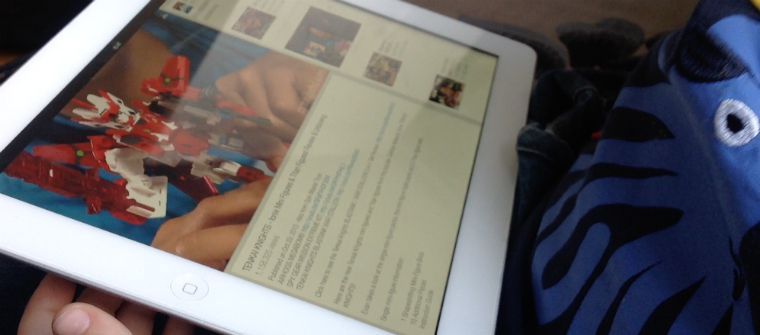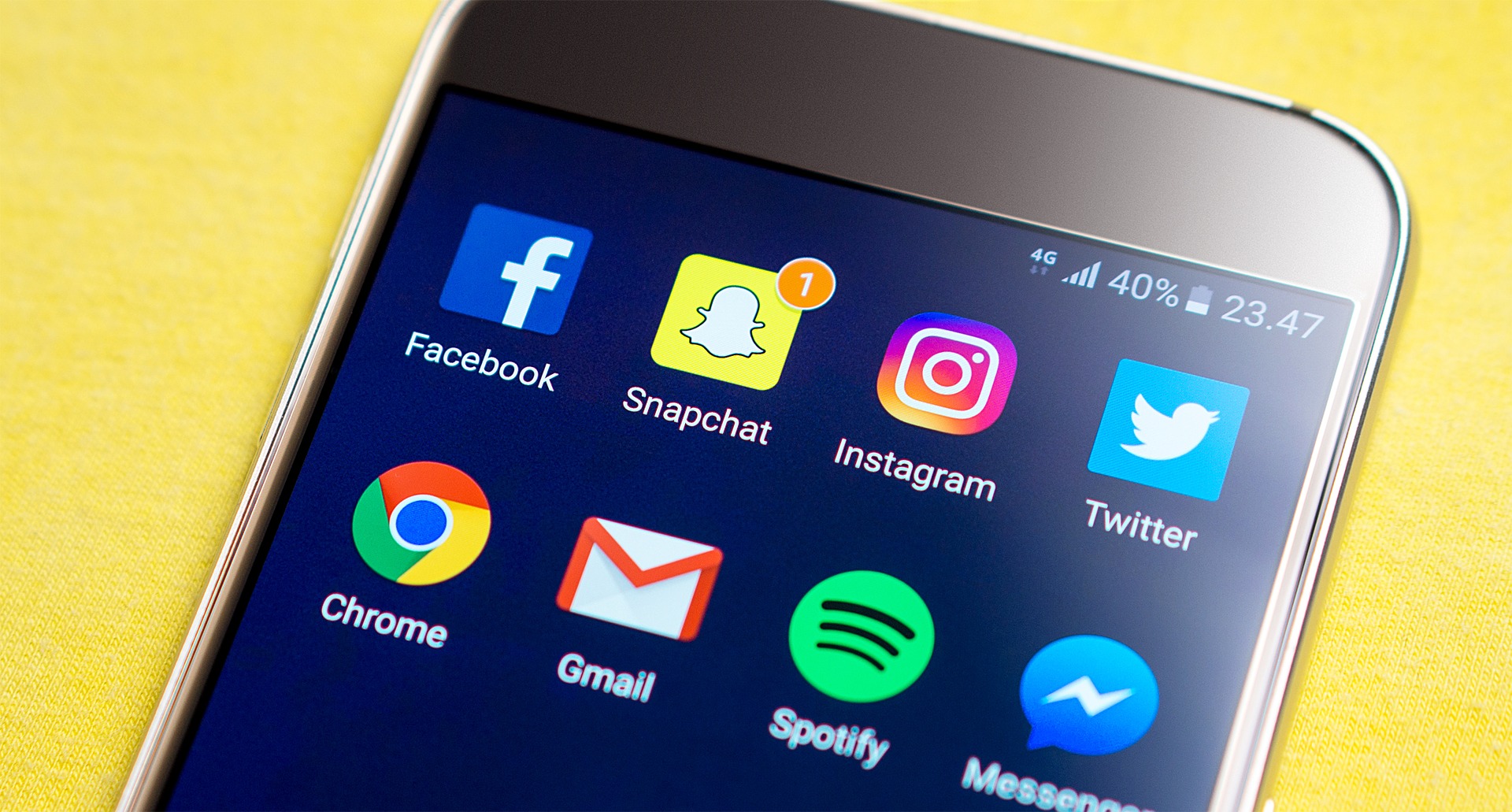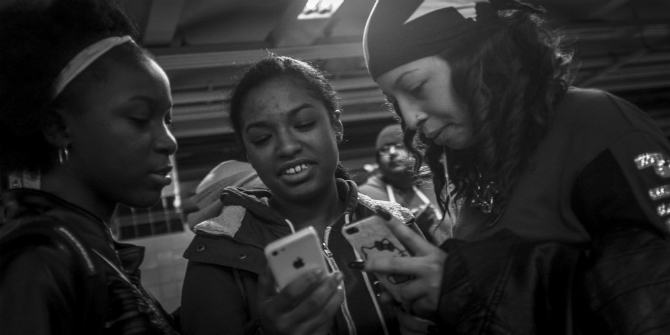 The undeniable reality is that ever younger children are gaining access to tablets, becoming proficient tablet users, but is this really in their best interests, developmentally? Sonia Livingstone highlights the findings of a recent report looking into young children’s digital play and opportunities. Sonia is Professor of Social Psychology at LSE’s Department of Media and Communications and has more than 25 years of experience in media research with a particular focus on children and young people. She is the lead investigator of the Parenting for a Digital Future research project. [Header image credit: Parenting for a Digital Future]
The undeniable reality is that ever younger children are gaining access to tablets, becoming proficient tablet users, but is this really in their best interests, developmentally? Sonia Livingstone highlights the findings of a recent report looking into young children’s digital play and opportunities. Sonia is Professor of Social Psychology at LSE’s Department of Media and Communications and has more than 25 years of experience in media research with a particular focus on children and young people. She is the lead investigator of the Parenting for a Digital Future research project. [Header image credit: Parenting for a Digital Future]
Pre-school-aged children have taken to tablets like ducks to water. A while ago a video went viral showing an infant trying to ‘swipe’ a magazine with growing puzzlement – a magazine, it seemed, was an app that didn’t work. The image of children trying to swipe the television set or a book seems to capture how quickly the world is changing in terms of digital literacy. The sense that the very young are leading the way, that they seem to know where they’re going, may help explain why parents are buying digital devices for the home, even when they are unclear about the benefits and anxious about the risks.
Tablet use among very young children
A recent report reveals that 25% of 0- to 2-year-olds in Britain now owns their own tablet, as do 36% of 3- to 5-year-olds – and they use their tablets for over an hour each day. The tablet is taking over as the most popular digital device in many homes, to some extent displacing time previously spent on desktops or even laps. This is especially unsurprising when you think that pre-school children – who cannot read or write – hardly find the keyboard an intuitive interface, nor even the distanced relation between mouse and screen.
Young children’s digital skills
What’s more surprising are the digital skills that this report shows children to be gaining. I should first note that the report is based on an online survey of 2,000 parents of children aged 0-5, funded by the Economic and Social Research Council (ESRC) and conducted by Professors Jackie Marsh and Lydia Plowman, together with CBeebies and others.
Among other questions, they asked parents which of a range of activities their children were able to do on a tablet unassisted (other options included ‘needs some assistance’ and ‘is unable to do/unaware of’). Figure 3 from the report below is fascinating in showing the wide range of things young children can do.
It also illustrates the new repertoire of digital skills and practices that today’s child must master – not only must they manage to open and close apps, but they also need to swipe, drag, tap, click, pinch, find and create content at will. Knowing how long it takes children to learn to read a book, hold a pencil or write their name, this new-found ability to manage content well before the age of five suggests a startling change in children’s competence, thus making the point that literacy (i.e., how well people can engage with meaningful texts) depends significantly on technology and textuality (how usable the technologies and how legible or interpretable the texts are).
Is being digital-savvy a good thing?
But even while adults marvel at little children’s new skills, they also worry about the consequences. Is this good for them, we are often asked by parents – and by journalists and others? While no social scientist can ever run that ‘perfect experiment’, where we randomly assign one group of children to a digital-free life while a matched group lives today’s digitally saturated life, so we can see how they grow up, there are lots of partial insights into both positive and negative outcomes.
Famously, the American Academy of Pediatrics recommended a complete ban on digital screens for the under-twos, as well as a two-hour limit for older children (itself not far off what UK data suggest children spend online, not taking into account other media uses). But they have began an investigation to revise this, on the basis of recent evidence (as well as sheer pragmatism) to say a complete ban is not merited – what matters is the content children engage with and the context within which they do so.
The technology and play report gives little insight into contexts of use (although see our post here). But it does say, importantly, that for the most part, little children are using tablets with parents or other family members, presumably therefore as part of lively domestic interactions around the screen (which is what child psychologists would generally favour).
It notes what content 0- to 5-year-olds are engaging with on tablets and other digital devices:

Although the report stops short of judging these, any reader will form their own view of whether this is good or not. Consider the debate over unboxing videos on YouTube, for instance – is this an opportunity for creative fun or subtle marketing?
Where the report is most helpful is in recording parents’ uncertainty about what’s good or not for their child. Over a quarter say that the barriers to downloading apps for their children include:
- not knowing whether it’s good quality or not (29% of parents say this);
- too much screen time (28%);
- not knowing whether it is suitable for their child (27%).
Such uncertainties represent a much greater barrier than being somehow against apps by comparison with books (only 14%) or other forms of learning (8%). So it isn’t that parents are resisting the digital, and nor are they very worried about inappropriate content (9%), but they are unsure how to make good decisions for their children.
Digital benefits
I’m tempted to stop here and say ‘more research is needed’ to inform parents! But the report has one more excellent contribution, building on both quantitative and also qualitative work with children, as well as a wealth of experience from the research team – a clear identification of the characteristics of apps that limit play and creativity and those that support them. This is something I know that many providers have also been thinking about and calling for.
Out of their many suggestions, I’ll end by highlighting these below – for providers to bear in mind, and for parents to ask themselves as they select apps and observe how their child interacts with them:








